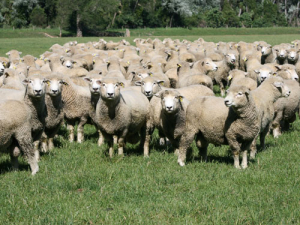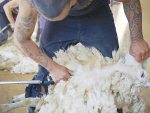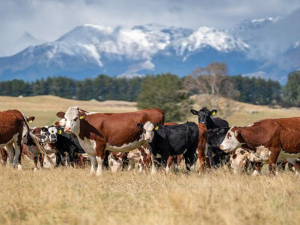As well as costing the industry many millions of dollars in lost production and treatments, both issues have significant animal welfare implications and cause farmers a lot of work and worry on top of what is an already busy time of the year.
The blowfly species that affect sheep are the Australian green blowfly, the European green blowfly, the Brown blowfly and the Hairy maggot blowfly.
Each has a slightly different seasonal pattern, but all are most active over December, January and February.
Treatments are based on different chemicals. However, to avoid resistance occurring, it is recommended that farmers only use chemicals they know to be effective and alternate chemicals if sheep are being treated more than once in one season.
Preventative treatments can also be tailored to match the seasonal behaviour of the most problematic species of blowflies in a particular area.
It is recommended that a different chemical is used to treat an active lesion to the ones used for prevention.
By keeping a record of flystrike, farmers will be able to identify farm hot-spots, where the incidence of flystrike is higher. These areas can then be avoided when fly pressure is high in favour of windy, more exposed paddocks.
Specialist crops that are high in tannins can reduce dags and therefore the risk of flystrike. Genetics can also play a part by selecting sheep that are not as susceptible to dags.
Strike flies will only affect carcasses up to three days after death, so burying dead sheep as quickly as possible is also a useful mitigation tool.
Meanwhile, facial eczema is a seasonal scourge caused by the spores of the fungus Pithomyces chartarum which grows on litter at the base of pasture.
The spores release a toxin which can damage the liver and bile ducts. In some cases, the bile ducts may become partly or completely blocked. The liver damage results in photosensitivity and sunburn which are the clinical signs of the disease.
The fungus is ubiquitous, but when temperature and moisture levels are high, the fungus grows rapidly, releasing huge numbers of toxic spores.
For every animal with clinical signs of FE – which are obvious skin lesions – there will be many more with sub-clinical disease, which is the invisible on-going liver damage that can cause major productivity losses, especially at mating, lambing and calving.
Spore counts (included in the B+LNZ e.Diary but also available on a number of vet and farm service websites) will alert farmers to high-risk periods in their regions. On-farm spore counts will give farmers a measure of the risk on their individual properties.
Management strategies such as lax grazing – to avoid the toxic spores concentrated at the base of the sward – or the use of summer forage crops such as chicory can then be implemented to help mitigate the risk of FE. Zinc is an effective treatment and can be delivered via regular drenching or rumen bolus.
Again, record keeping will help farmers identify the farm’s hotspots which can be avoided during high-risk periods.
For sheep, genetic tolerance offers the best long-term protection against the disease and many breeders have been testing rams for many years now.
When selecting rams, commercial farmers (who want to include FE tolerance in their trait selection) should ask their breeder how long they have been testing rams, the level they are testing at, the number of rams they test every year and ask to see the Ramguard certificates. (Ramguard is the AgResearch-managed organisation that carries out the FE tolerance testing.)
B+LNZ has a number of resources covering Flystrike and Facial Eczema on its Knowledge Hub.



















